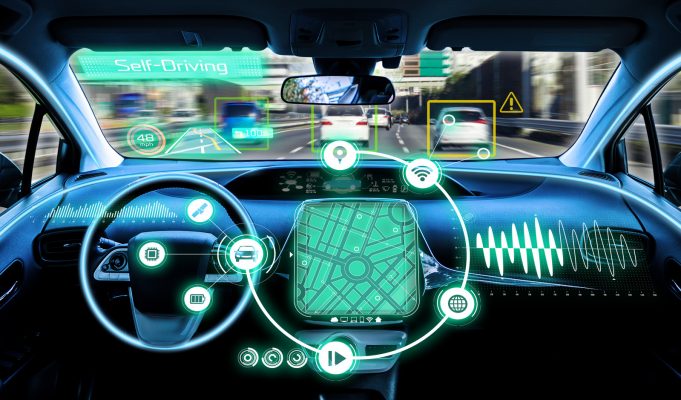There are many reasons why you may feel the urge to buy a specific car model. It could be that you simply cannot resist its electric blue colour. Or it may be that a big, sturdy vehicle for weekly countryside trips is right up your street. Whatever the motive, drivers tend to purchase cars that best suit their needs and personalities. It’s scientifically proven that dogs look like their owners. Could we say the same about cars and their drivers?
Indeed, tech-savvy people are likely to drive vehicles that are rich in modern, futuristic features. From inch-accurate sat nav systems to smartphone-connecting panels, cars conceal a wide range of surprising in-built features. However, this has not always been the case. In the past, certain comforts were hard to come by.
How have cars evolved over the decades? Motorparks, owners of dealerships such as Ford Croydon, take a look at some of the most impressive in-vehicle features that have been introduced over the years.
1910s
The Ford Model T was one of the first cars to make it on the market. Launched back in the 1890s and sold from 1908, it was one of the earliest efforts to produce a vehicle that everyone could afford. Since its charming debut on the streets of Europe and the US, newer counterparts gradually started to exhibit more interesting features.
At the end of the 1910s, motoring manufacturers began to realise that building normal glass into cars was a hazard. In the event of a crash, it could break into dangerous shards. Therefore, in 1919, the first ‘safety glass’ was developed and introduced. By shattering into tiny pieces, it posed – and still does – a limited risk.
1920s
It is fair to say that, in their early days, cars were to be driven to the sound of their engine. Perhaps motivated by the swing and Charleston tunes of the ‘roaring twenties’, manufacturers started to test in-built car radios.
By the end of the 1920s and the start of the 1930s, people could drive while listening to music playing from their Motorola 5T71 car radio. Although quite expensive at the time, it was certainly a cool and unusual item to have.
1930s
Indicators are a fundamental component of most vehicles. While it is only natural to find them built in modern cars, indicators were not actually introduced until 1933.
Indeed, credit goes to Morris Motors. During the first half of the 1930s, the motor company equipped its vehicles with semaphore arm direction indicators. A semaphore arm would both illuminate and raise outwards to tell fellow drivers in which direction the car was going.
1940s
If you have a soft spot for fast vehicles and racing cars, you certainly would have loved the Jaguar XK120. Launched in 1948, Jaguar introduced the fastest production car on the market at the time.
Reaching a top speed of 120mph, it was a must-have for all adrenaline junkies in the 1940s.
1950s
The 1950s brought a large array of car innovations. In 1951, for instance, power steering was introduced. Two years later, the first air conditioning system appeared too. It soon became of the trademark features of the Chrysler Imperial and came with three different settings – low, medium, and high.
In 1958, cars started to benefit from cruise control, which made driving easier, steadier, and more comfortable – especially on motorways. By the end of the decade, in 1959, Volvo presented the three-point seatbelt. To this day, it is one of the most effective safety devices ever made. This said, wearing a seatbelt became compulsory only from 1983.
1960s
The 1960s also witnessed a fair few introductions. From the start of the decade, electric windows made their debut in the car industry.
In 1966, fancier vehicles began to feature some truly avant-garde heated seats. Then, in 1968, Volvo delivered the first front-head restraints. These were particularly useful as they would protect passengers’ heads and necks in the event of rear-end accidents.
1970s
The Lamborghini Countach kicked off the 1970s with a snazzy feature. It wasn’t merely its sleek aesthetic that bewitched motorists. Instead, it was its impressive up-swinging doors that truly made an innovative, cultural impact.
Furthermore, in 1973, the all-important airbags were also developed. The first ones were bulky and popped out of the steering wheel. They were designed, of course, to cushion drivers from hard surfaces in the event of a strong collision.
1980s
Car keys have been around since 1949. However, remote keyless systems started to emerge in the 1980s. The first one was introduced in 1980 on the Ford Thunderbird.
As for car stereos, we already mentioned that they began to feature in cars at the end of the 1920s. But when could you start picking your own songs? In 1984, when CD players were finally built into vehicles too.
1990s
As time goes by, technology evolves and cars benefit from more and more features. In the 1990s, vehicles began to exhibit some truly impressive additions.
One of them was the Global Positioning System (GPS) – it was introduced in 1995. Moreover, from the early 1990s, automatic parking was proposed. Volkswagen was the first to come up with the idea and started working on a parallel parking system. However, commercial use of this system would emerge later in 2003, when Toyota launched its Prius hybrid car.
21st century
It is safe to say that motor manufacturers keep enhancing cars year on year. Over the past twenty-two years, there have been a significant amount of stunning in-vehicle introductions.
In 2007, some cars were taught to detect fatigue in drivers by scanning their face and head through a clever system. If you are blinking too often or show signs of tiredness, it will activate a warning alert.
Also, voice recognition and control devices have been developed, allowing drivers to adjust various settings by voice. What is more, since 2020, driverless car trials are happening more frequently in the race to the next big innovation.
There is no denying that cars have evolved significantly over the past century or so. Of course, there is certainly still a lot to look forward to.
In the meantime, we hope you enjoy this short history of in-vehicle features by decade. Which is the most impressive introduction to date?
Sources
https://www.autoexpress.co.uk/car-news/90221/the-evolution-of-car-safety-a-history
https://www.idrivesafely.com/defensive-driving/trending/evolution-automobile
https://www.titlemax.com/articles/a-timeline-of-car-history/
https://www.history.com/topics/inventions/model-t
https://www.bbc.com/future/article/20151111-why-do-dogs-look-like-their-owners
https://industryomatic.com/top-5-awesome-car-features-of-the-past-decade/
https://www.insurethegap.com/articles/a-brief-history-of-car-manufacturing-in-britain










